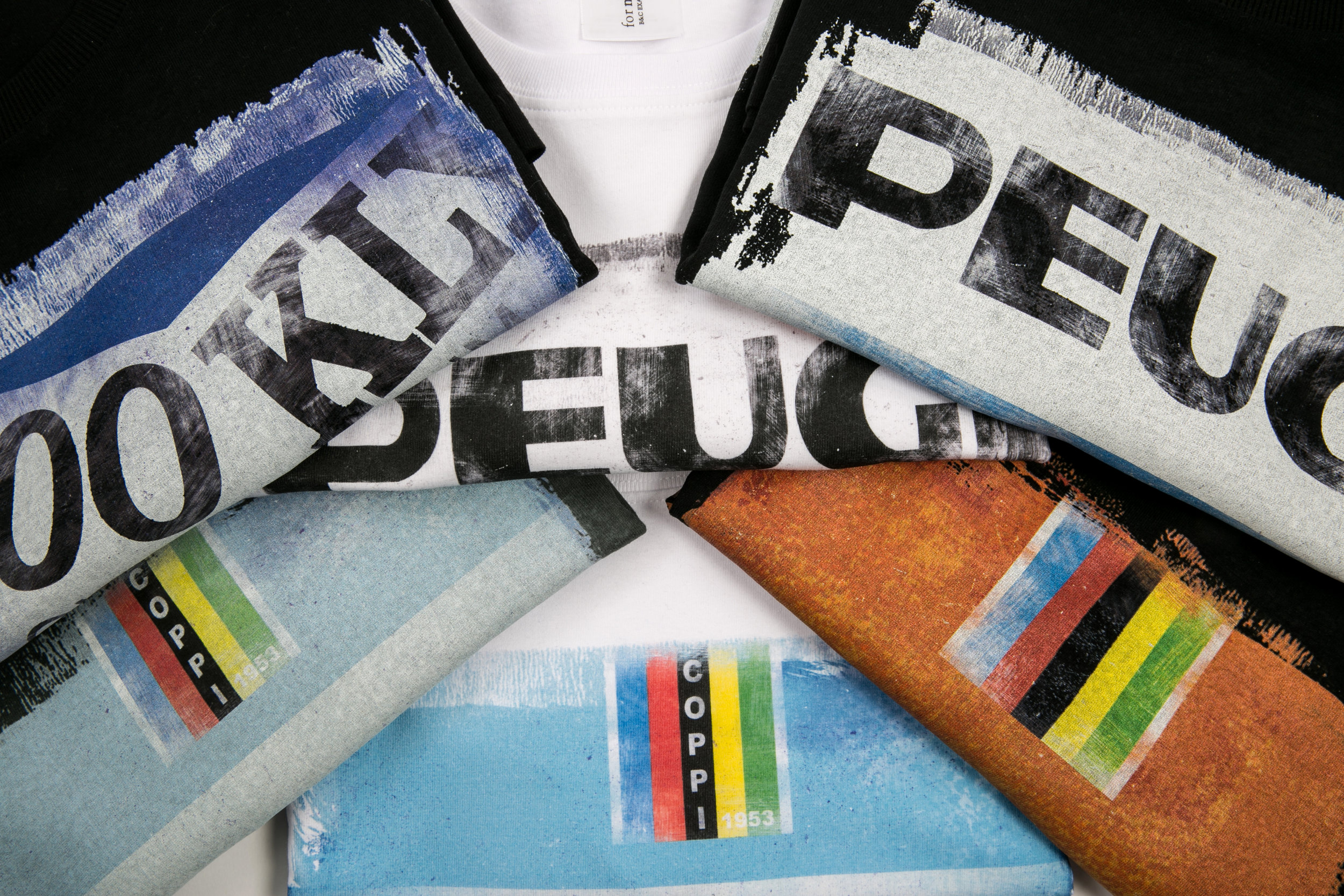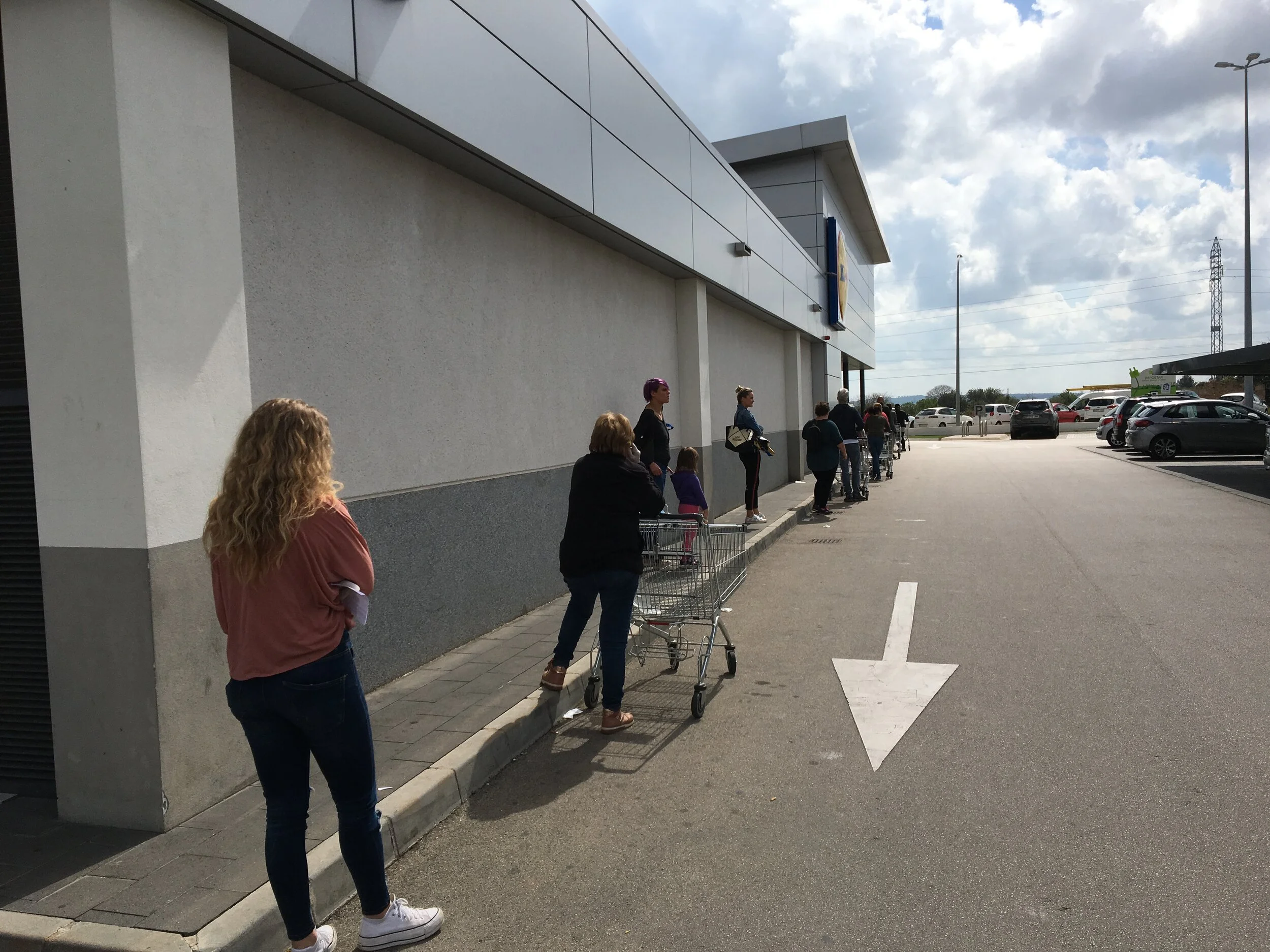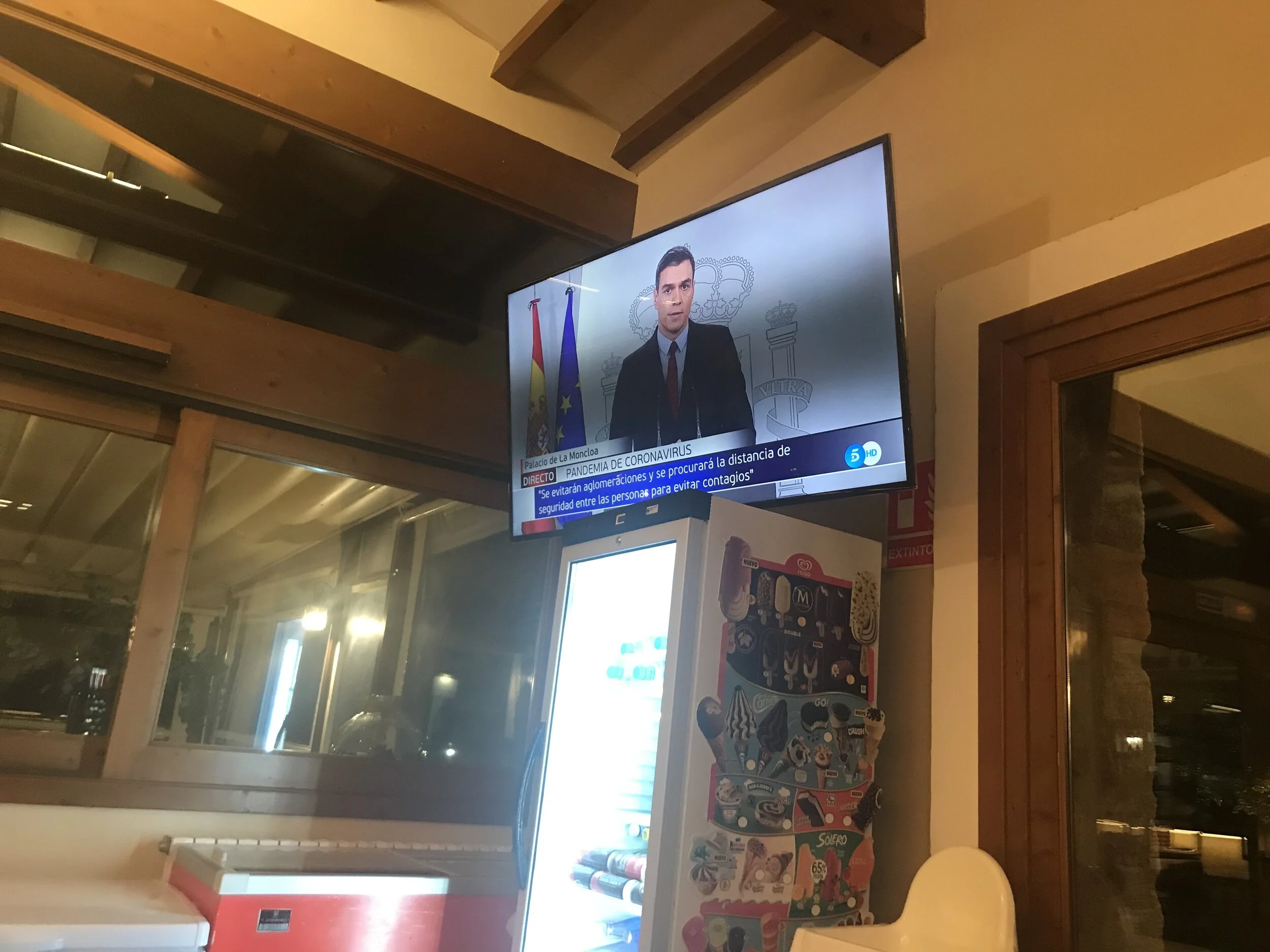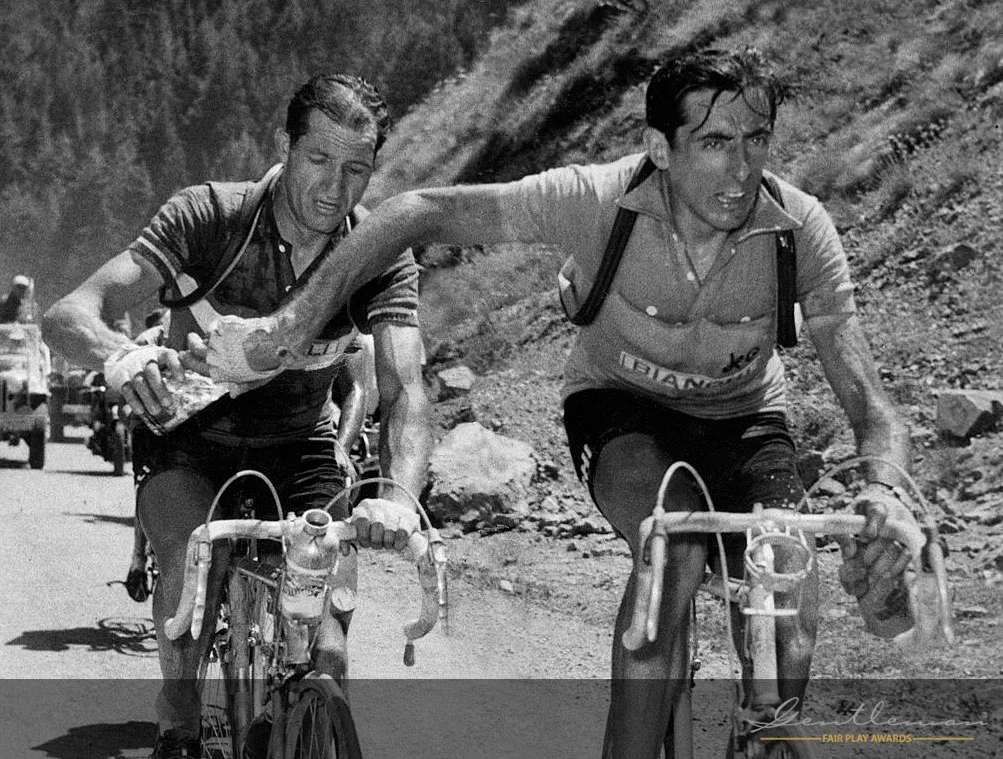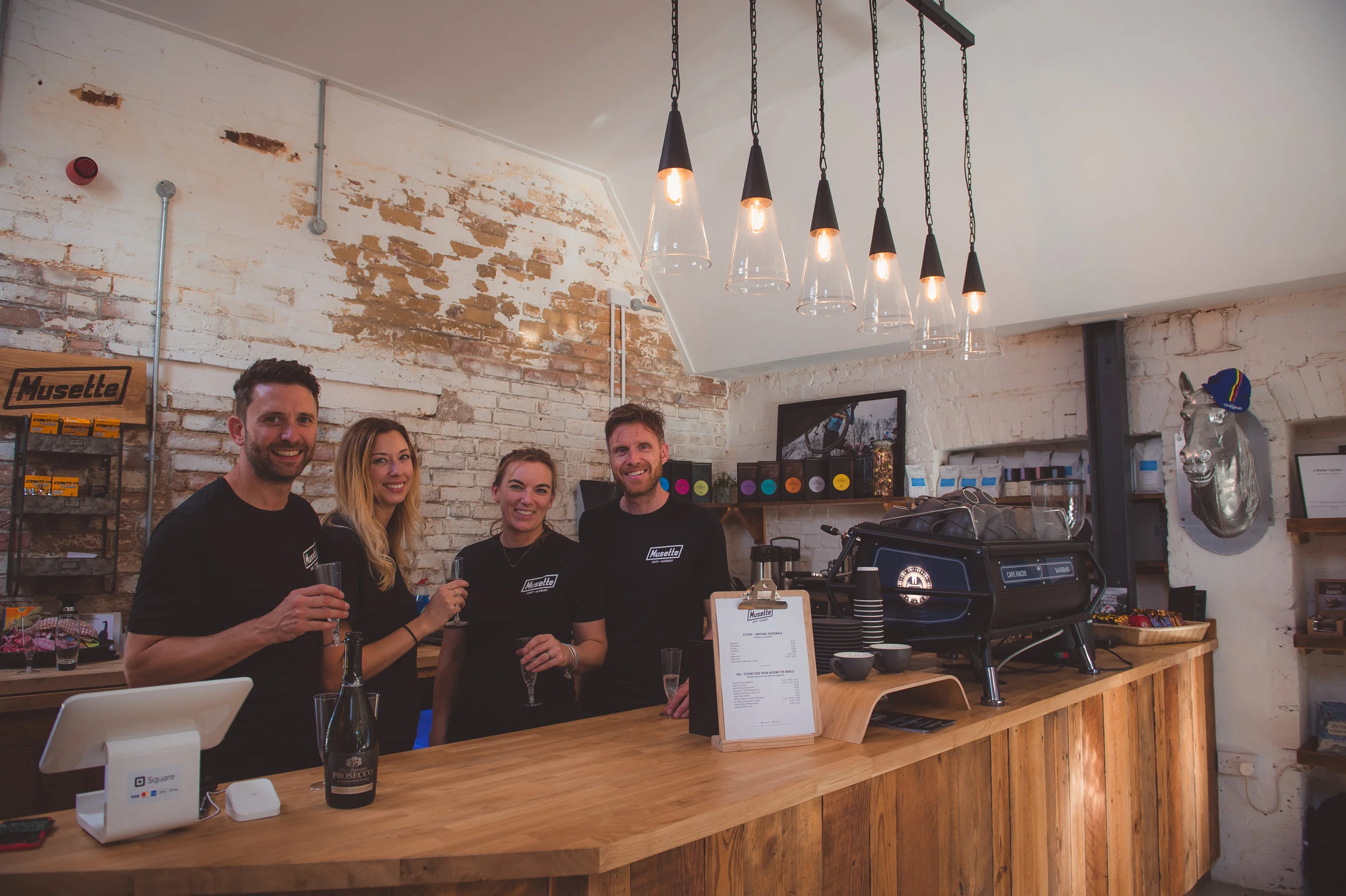This weekend sees 15,000 amateur cyclists from all around the world attempt a stage of the Tour de France when they undertake the L'Etape du Tour. Riders will follow the same route on Sunday that the professionals will be tackling on Stage 20 on 23rd of July from Megeve to Morzine. They will complete 3,300m of climbing on the 146km route and have to conquer the famous Alpine cols of Aravis, Colombier and Joux Plane.
Elation on completing the 2013 L'Etape du Tour in Annecy
Completing the Etape du Tour is seen as the ultimate challenge for MAMILs trying emulate their cycling heroes and experience what it’s really like to ride a stage. The motorways heading south to the Alps will be full of Brits racing to get to registration in time today. Their cars will be carrying some of the finest carbon fibre on offer while their bags will be packed to the brim with the essential energy bars, gels and nutritious snacks required. You can expect plenty of Strava bragging come Sunday as these amateurs realise their dreams of recording a proper Alpine stage.
Lac Annecy
My personal experience of the Etape is of two vastly contrasting years when I took part in the 2013 and 2014 editions. 2013 saw a circular route starting and finishing in the beautiful “Venice of the Alps” town of Annecy. The weather that day was fabulous: beautiful blue skies mirrored by that gorgeous lake, warm temperatures and no wind. My experience of riding on the continent was limited, to say the least, and I’d never climbed an alpine mountain. My training had consisted of grafting up and down Woldingham Hill in Kent and any other steep slope I could find within an hour’s ride of London. Woldingham is quite long for a climb in the South of England, perhaps 3 km. I’d not achieved anything like the brutal 13km I would have to overcome at the end of this ride. The most climbing I had ever done in a day was about 1,000m. This was going to be 3,500m.
Energy gel - check, water bottles - check, pack of fags - check
My anxiety was further increased shortly after the start of the sportive when I got chatting to an Irishman who lived in nearby Geneva and had done a practice run of Annecy Semnioz a couple of weeks earlier. “It’s a tough climb,” he said. “One of the hardest I’ve done.” He looked around at our fellow riders on lighter and better bikes than mine. All shaved legs (compared to my hairy ones), tight lycra and determined grimaces. I also had a guilty 20 a day fag habit. “Most of this lot,” he said, nodding at our mini peloton, “they don’t stand a chance!”
It was then that I stuck my head down and promised to myself that I would finish. I was going to finish even if it killed me. And whatever happened I was not going to be picked up by the dreaded broom wagon that sweeps up riders unable to make it in the time-cut.
Standing on the shoulders of giants...
What followed was possibly one of the best days of my life. I stayed on my bike for the entire length of the stage except for the feed stations where I refuelled. I conquered each and every climb and flew down the descents in delirious excitement. That last climb was brutal, but the road was lined with spectators cheering us on with shouts of “Courage” and “Chapeau” that spurred me on and helped me overcome the pain and exhaustion, to achieve heights beyond my true physical capabilities. One onlooker poured welcome cool water over my head as I passed. It was all in the mind. I could do this.
When I crossed the finish line at the top of Annecy Semnioz I was elated. It wasn’t exactly a Tour de France winning performance – I’d gone at my own steady, slow pace, but I’d finished a true Alpine stage. As I climbed off the bike I was light headed and stiff. Then I remember wanting to cry with relief and the pain I was feeling. But it wasn’t over yet. We’d finished at the top of a mountain and you now had to get yourself back down the whole way to Annecy town, a descent of some 13 km.
Checking out the goods in the race village
Bizarrely, that descent was the hardest thing I had to do all day. I was physically exhausted, of course, but it was letting go of the mental drive and will as I crossed the finish line that made it so hard to pick myself up again, climb back on the bike and descend. I began to feel the coldness of the mountain air, making me shiver and my hands ached as I applied the brakes. Even the sight of those riders still climbing on the other side of the road failed to lift my spirits. When I finally made it into the race village, my partner, Ellie, was there waiting for me and it was the most beautiful embrace I’ve ever had. The elation I’d had at the mountain top finish returned in a huge wave.
Of course, having had completed it once, I was determined to do it all over again the following year. And it was to include two famous climbs, the Tourmalet and the Hautacam. For one reason or another my training was even sketchier than the previous year. I’d certainly put on a couple of kilos, still broke up my rides with a crafty fag, and had been celebrating the end of my teaching year a little too enthusiastically. Colleagues would look at me questioningly as I stood outside the pub, pint and Marlboro Light in hand, on a Friday night. “You really doing that bike race thing again?”
Well, my confidence was high having done it once before. As we stopped at a service station in France on the way down to the Pyrenees, I sneered at some of the other Brits making the same journey. While I ventured off to buy a local chicken baguette, they were pulling out ice-boxes from their cars which contained rice cakes, health drinks and nutritional supplements. “Really!” I thought. “These MAMILs just take the whole thing far too seriously!”
Twelve hours later in a smart B&B outside of Pau, I was starting to regret eating that chicken sandwich. My bowels began making involuntarily spasms. Searing pain in my stomach doubled me over. I had food poisoning. I spent a miserable night hunched over a toilet wishing I’d packed rice cakes, health drinks and nutritious supplements in the car instead of risking my health in a motorway service station by eating warm chicken that had been sitting there for God knows how long.
Somehow I struggled to register the following day, the day before the race. I got my bike out the car in the evening to put the wheels on and attach my race numbers. Taking it out for a test ride had me break out into a feverish sweat within a couple of minutes. This was not the preparation I needed. What’s worse the forecast was for torrential rain and freezing temperatures at the summit of the climbs.
The big day came and, as happened the previous year, the atmosphere of the occasion took over from everything. The stomach cramps had gone and I was feeling a little weak but I was excited. Actually, the fact that I’d been ill the day before made it even more of a challenge. And that steely determination began to set in again.
I decided to break everything down into small achievable goals: get to the top of this rise, to the next feed station, to that bend. Stick on someone’s wheel and unashamedly draft in their wake. On the climbs I’d do sixty pedal strokes sitting in the saddle, then another sixty standing up. I dropped a couple of Nurofen and the pain my back began to ebb away. The spectators on the side of the road cheered us on like last time. The Tourmalet loomed high above us.
Preparing the bike in Pau
It’s funny how certain sections of a ride can be so much harder than others. For me it was the long false flat that approached the mountain, not the mountain itself. Having those targets of getting to the next hair-pin or bend in the road got me through. By the time I got to the top I was a mess: soaked on the outside from the rain and soaked on the inside from sweat. It was cold up there with a slashing storm and whipping wind. Shivering, I realised I had to get down. Quick.
I’ve ridden in Wales in February when the roads have been dusted in snow. I’ve had winter rides in the Peak District when hardier souls have made their excuses. So I thought I was made of stern stuff. But that descent was the most unpleasant experience I’ve had in my life. My whole body shuddered and shivered with cold, my hands were completely numb. I came down the mountain screaming at myself. “You f…ing idiot! What the f… did you think you were doing?” I realised that I would soon catch hypothermia if I didn’t stop and try to warm up, so when a stone barn appeared around a corner of the bend I stopped to get shelter.
The atmosphere at the start was electric
Inside I found a dozen shivering men all doing the same. I helped someone retrieve a sandwich from his back pocket. I stuffed an energy bar down my mouth and jumped up and down several times holding my hands under my armpits. I think I was there 10 minutes or so, but in that time manage to restore sufficient warmth back to my body. I was pleased I had because when I got to the bottom there were guys, blue in the face, being helped by medical crews into the back of ambulances.
So, having conquered the Tourmalet, there remained the small matter of the Hautacam. To really test the mental resolve of the riders the route took us almost directly past the finish village before beginning the climb. I don’t know how many people turned off at that point, there were quite a few, and I was sorely tempted. But, quite frankly, feeling amazed that I’d managed to even get this far, made me even more determined to finish the bloody thing.
From the best day of my life - to the worst day of my life
The Hautacam is less severe than the Tourmalet. But it’s still a hell of a climb, especially if you’ve already completed well over 100km that day. I resorted to my mini targets of reaching the end of hair-pins, getting in and out of the pedals, sticking on someone’s wheel. Halfway up I had to stop, something I never, ever do. Getting back on was torture, and after a couple more hair-pins I had to stop again. With 2 km to go I was questioning whether I could make it, but I counted down the 500m markers and finally crossed the finish line in an embarrassingly slow time. But I’d done it!
Strangely, this descent to the finish village wasn’t so bad as the previous year. I was immensely proud of having completed it given the state I’d been in the previous day and a sense of euphoria overcame me. I was desperate to see Ellie who I knew had been worried about me, had tried to persuade me not to do it after the food poisoning. Finally reunited, and with a finish medal around my neck it was the same sense of relief, exhaustion and feeling of happiness.
Elation at the finish
So it may be a little late to offer advice to participants for this year: I hope you didn’t get food poisoning and I hope you don’t smoke. Because you’re going to struggle if you do. But it’s not impossible with a little will power and determination. You have my admiration and support: “Courage, Chapeau and Bonne Chance!” I’m jealous that I won’t be rolling over the start line tomorrow. In fact, now that I’ve given up the fags I’m going to start training for next year!


